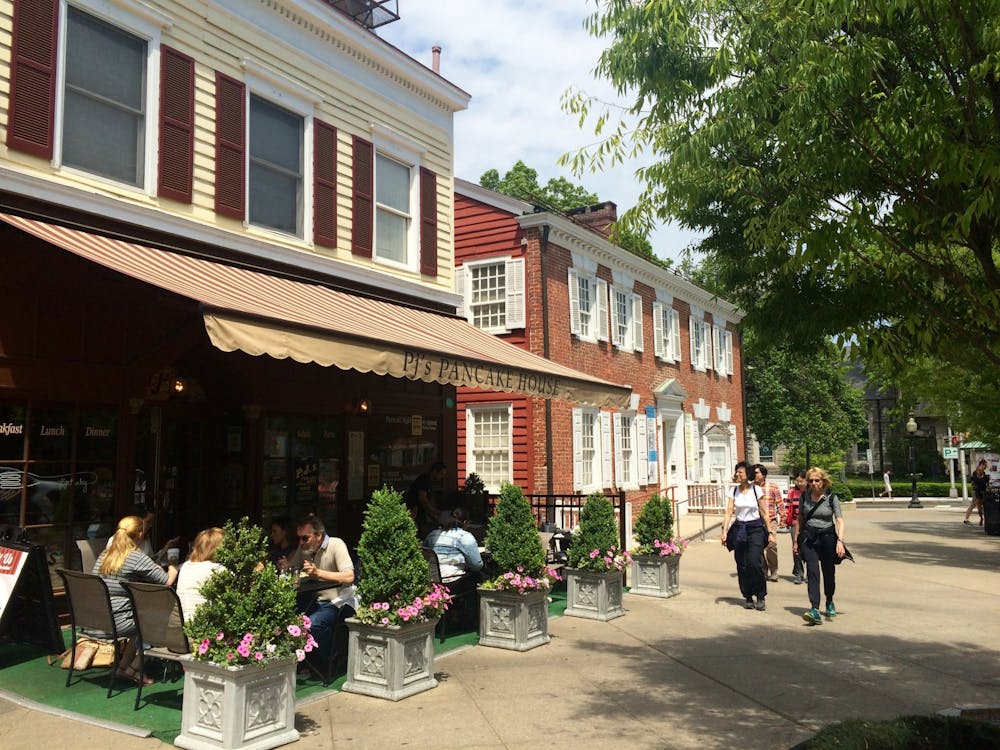A tale of foolishness, lust and vengeance, "Sweeney Todd — The Demon Barber of Fleet Street," combines murder, dance, guilt, song, lust, and music all on one stage. A senior thesis in the Program of Theater and Dance directed by Clifford Sofield '02 and music directed by Matthew Lembo '02 and presented in conjunction with the Department of Music, the musical proves that, as the title of one of the show's songs says, there is "no place like London."
The musical (with book by Hugh Wheeler) tells the tale of Sweeney Todd, a barber who finds a lucrative career in the murdering of his clientele. After fifteen years in prison, Sweeney Todd, played by Benjamin Beckley '03, returns to the streets of London as an ill-put together fellow.
On the street, he meets Nellie Lovett, played by Samara Abrams-Primack '02, his soon–to-be partner in his latest criminal endeavors.
Lovett designs the hair-raising plot to turn "the worst pies in London" to the best meat pies by using the bodies which are the remnants of Todd's dirty work and baking them into pies.
Undeniably greedy, Lovett expects half of the profit from their evil trade — but she is not completely callous. The play also potrays the lonely widow's growing feelings for Todd as she falls in love with him even in the middle of their extremely dark dealings.
Meanwhile, Anthony Hope (Joseph Cermatori '05), a sailor who saved Todd's life, falls in love with Todd's estranged daughter, Johanna (Monica Millan '02). She is being brought up as the ward of the twisted Judge Turpin (Kevin Simmons '03).
The musical preys on two common human fears — being murdered when in a vulnerable position, and unknowingly engaging in revolting behavior. Who hasn't felt a shiver while sitting in the barber's chair, as he sharpened the knife? And who hasn't once taken a bite of a hamburger at a low-class burger joint and wondered if cows really were that tough?
Despite playing with these universal emotions, Sweeney Todd is a very difficult musical to perform. Clifford Sofield '02, who directed the show, says that the biggest challenge was to coordinate the sheer number of people involved — 19 singers, 12 musicians, a set designer, a lighting designer, and a carpenter, to name just a few.
Also, each person involved with the production had to face a balancing act of their own. As Abrams-Primack says, "The most difficult part of this production was trying to do the show justice at the same time I was writing my thesis."
But the show came together. The "The Ballad of Sweeney Todd" was an impressive opening number and also closed the show. As the voices of the actors harmonized as one at the end of the number, the song rose to almost operatic status conveying Sweeney Todd's madness.
Another impressive aspect of the show was the professional lighting and set design that was successful in representing London as a holding pen for lost souls and evil demons.
The set is split into two floors: the top floor serves as everything from a ballroom to Sweeney Todd's barber shop, and the bottom floor shifts from London streets to Nellie's pie shop.

While settings and plotlines intertwined on stage through music, the cast did an exceptional job of directing the audience's focus to the most meaningful part of the scene.
The actors might not have succeeded at maintaining British accents throughout their singing, but, then again, neither did the Beatles.
Music director Matthew Lembo '02 best summed up the group's dedication when he said that everyone involved in the production "put in an amount of effort and dedication worthy of two or three senior theses."
The audience, much like the "lost" creatures that inhabit Sweeney Todd's London, become wrapped up in the music, laughter, and violent theatrics. In the end, the audience members try to understand justice in a play were madness is so subjective.







